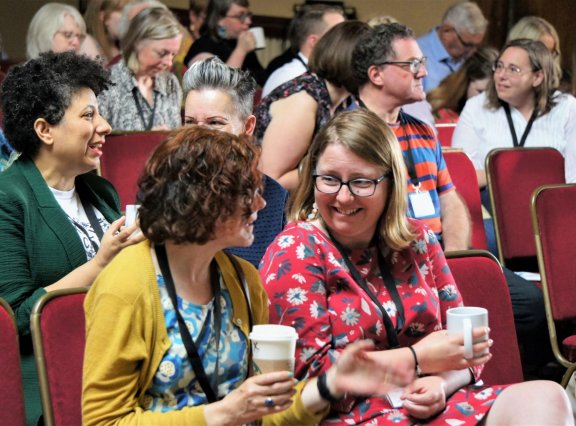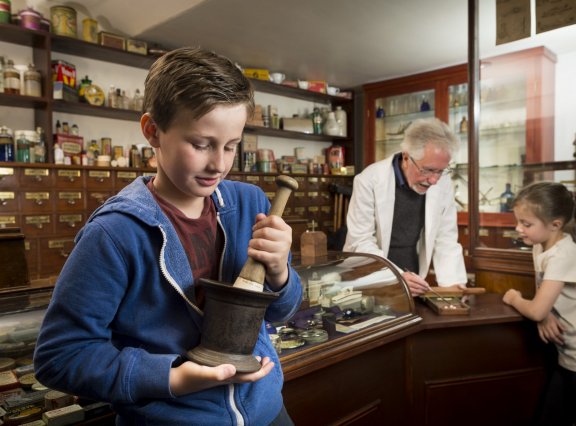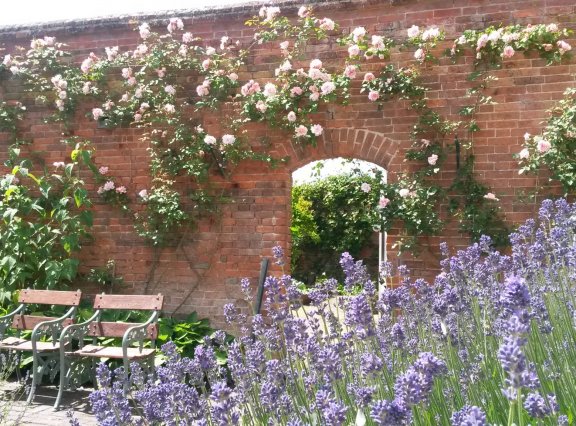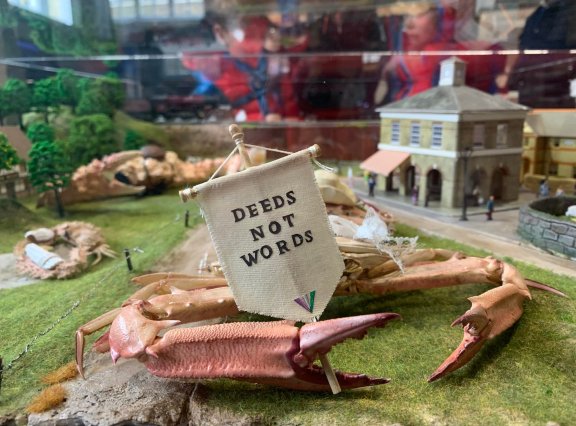Stay in touch with the latest news from AIM and get information on sector grants, jobs and events with our free fortnightly E-News.
Setting up a new museum
Authors: Emma Chaplin and Heather Lomas.
This success guide aims to help groups or individuals in the UK who are thinking about setting up a new museum to make some informed choices. It may be that after reading the guide you decide that a museum is not the right approach for you and we will signpost some other options.
If you do decide to continue with setting up your museum, the guide aims to give you a structure that will help you build a strong and successful museum and avoid potential pitfalls. It is not intended to be (nor could it be) an exhaustive guide, but it provides an overview of the scope of the work involved.
The guide is structured around the AIM Hallmarks of Prospering Museums. The AIM Hallmarks distil and share the experience of two generations of leaders of independent, innovative and imaginative museums, combined with respected thinking and research. Since they were first published in 2015, AIM has worked with museums and heritage organisations across the UK to put the ideas in the Hallmarks into practice in hundreds of museums.
Click here to download the PDF of this Success Guide (published September 2022)>>
The nine Hallmarks cover all the aspects of running a museum successfully and are an excellent checklist for a new museum to use to plan its development.

What is a museum?
The term ‘museum’ can be used to describe a range of different types of organisation and different types of visitor attractions. This guide presumes that a museum will include some important key elements:
- Care of a collection will be central to what the museum wishes to do.
- It will also provide access for the public to its collection(s).
- Its governance and planning will be designed with a long-term view, so that it can preserve and share its collections in the future.
This guide focuses on museums that are planning to have a physical presence, i.e. a building that can be visited. Some museums start with a virtual presence or in temporary ‘pop-ups’. This approach can be very successful in telling stories and engaging audiences and might also be part of how your museum evolves over time.
The formal UK definition of what is a museum can be found here: What is a museum?
Although this guide is designed for museums which are (or will be) established for public benefit, it still offers useful advice and principles if you are concerned with a collection in private ownership.
Other options to consider
A museum isn’t the right approach for everyone or every heritage project. There are alternatives that have less of an emphasis on a collection of objects and are less of a long-term commitment, but still provide an exciting and educational experience – for example, a visitor centre, a community archive, a discovery trail, or information panels. You might realise that your ambition is to preserve a historic building or site and that may not be the same as setting up a museum.
This toolkit from Museums Galleries Scotland can help you assess your options>>

Hallmark: Awareness and networks
The organisation constantly looks ahead, including outside of itself to the broader heritage and tourism sectors. It is aware of trends and anticipates challenges. It makes itself well known, relevant to and visible within its immediate community and has a range of other, wider networks. Click here for Awareness and Networks>>
(Image credit: AIM Conference 2022)

Hallmark: Purpose
Know, articulate and embrace your purpose. Click here for Purpose>>
(Image credit: Beck Isle Museum of Rural Life)

Hallmark: Governance
Consciously practice good governance by following the Charity Commission and AIM guides. Click here for Governance>>
(Image credit: Castle Bromwich Hall and Gardens)

Hallmark: Leadership and Culture
Create an organisational culture that can readily adapt and respond. Click here for Leadership and Culture>>
(Image credit: Royal College of Physicians)

Hallmark: Finance
Be financially resilient and well managed as a charitable business. Click here for Finance>>
(Image credit: Discover Bucks Museum)

Hallmark: Tackling Inequality
The organisation recognises its responsibility to carry out its purpose for the benefit of all, striving to make a positive impact and represent all communities.
It understands and takes action to challenge prejudice and inequality and create equality of opportunity for its workforce and users. It acknowledges that the connections between our nation’s history and heritage are an invaluable tool in the fight against discrimination. Click here for Tackling Inequality>>
(Image credit: Judges Lodgings)

Hallmark: Innovation
Be adaptive, resourceful and prepared to take risks. Click here for Innovation>>
(Image credit: The Crab Museum)

Hallmark: Collections
Collect, care for and make your collections accessible. Click here for Collections>>
(Image credit: Petersfield Museum)

Hallmark: Visitor Focus
Understand your visitors and supporters – especially the visitor experience – and invest in its improvement. Click here for Visitor Focus>>
(Image credit: Kiplin Hall and Gardens)

Next steps
Test your ideas, develop a business plan and ensure you meet your legal responsibilities. Click here for next steps>>
(Image credit: Beamish)
About the authors
Emma Chaplin is a highly experienced and respected museum professional, having led the Association of Independent Museums from 2018-21 and developed a successful consultancy business from 2009-18, building on senior management and curatorial roles in independent and local authority museums. Her work is characterised by her energy, professionalism and deep knowledge of the museum and heritage sector and its networks. She has relaunched her consultancy business and is currently working with clients on collections management challenges, funding applications and business development work whilst also working with Museum Development North West as the Accreditation Scheme Advisor for the region’s museums.
Click here for Emma Chaplin’s website>>
Heather Lomas is a cultural heritage consultant, she specialises in supporting museums and heritage organisations with their development, including organisational change, good governance, management and development of collections, project management, volunteer development, consultation and facilitation. Heather is an AIM Prospering Boards consultant and has provided recent workshops for AIM focussed on business planning and succession planning for trustees. She provides advice as part of the Arts Council Museum Accreditation Scheme for Museums Development in the East Midlands and the North East and she is also a consultant for the National Lottery Heritage Fund providing monitor and mentor support and expert advice, particularly around business/organisational development and grant monitoring.
